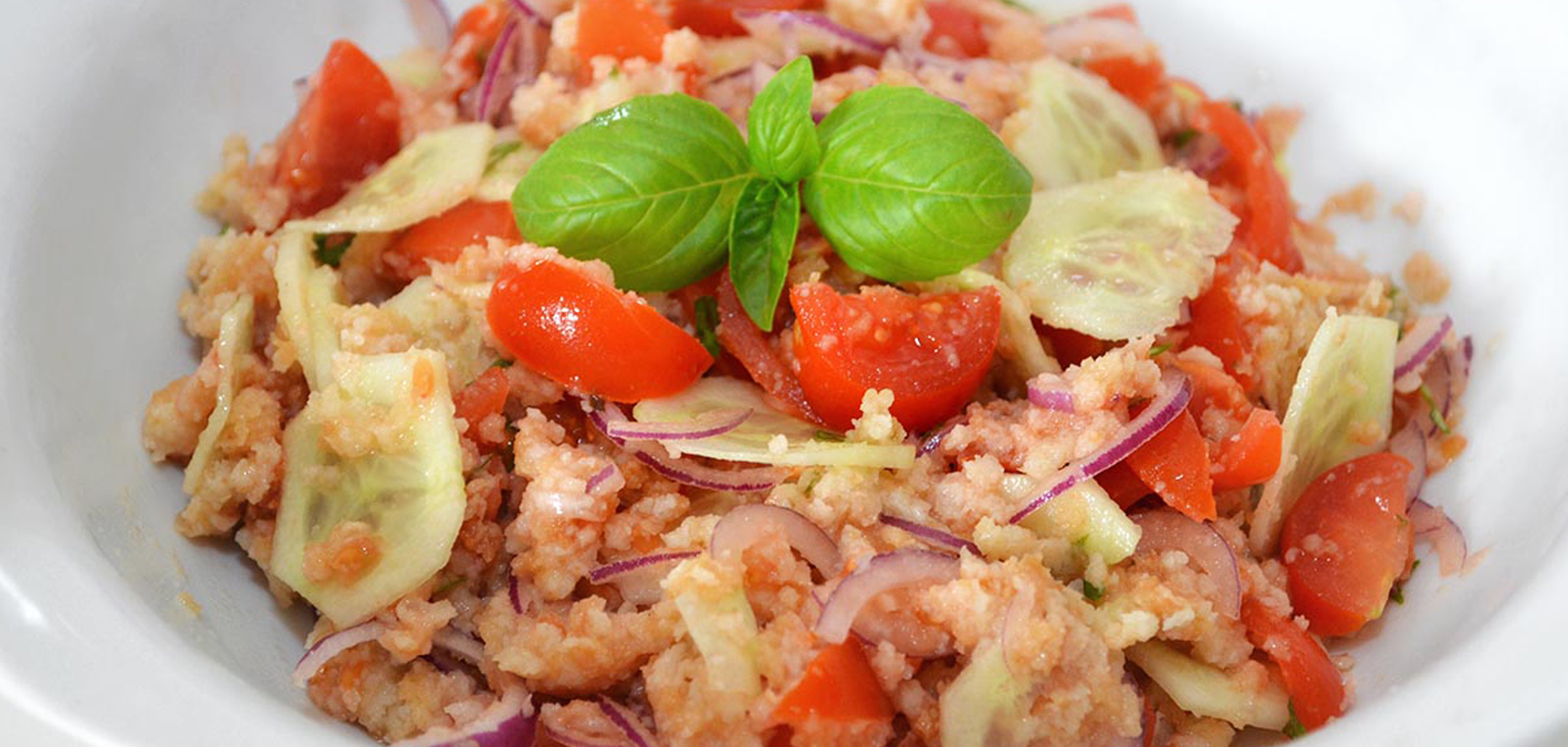
Tuscan summer recipes: Panzanella
Eating well in the summer can be difficult when the heat makes you want to give up cooking on the stove, but there is a traditional Tuscan dish that will solve this problem and will also stimulate the most refined palates, despite its simplicity: Panzanella!
A fresh and substantial dish, Panzanella is very popular, in the summer months you will find it on all the Florentine tables and it is the perfect packed lunch for a day at the beach.
In the old times nothing was thrown away and people had to make do with what was left in the pantry to feed a family, so one had to be creative. It was from the very creativity of housewives and maids and the recovery of stale bread that Panzanella was born, just like it had happened for other famous dishes of the Tuscan cuisine in which the leftover bread is the great protagonist, such as pappa al pomodoro or ribollita.
This recipe has very ancient origins, the so called "pan lavato" (washed bread) is mentioned by Boccaccio in the fourteenth century and the painter Agnolo di Cosimo known as the Bronzino even wrote some rhymes in honor of this dish:
Ma chi vuol trapassar sopra le stelle,
Di melodia, v’aggiunga olio e aceto
E’ntinga il pane e mangi a tira pelle.
(… ) Un insalata di cipolla trita
Colla porcellanetta e citriuoli
Vince ogni altro piacer di questa vita.
Questo trapassa l’amor de’ fagiuoli,
E d’amici, e di donne, che con essi
T’ammazzeresti per due boccon soli.
Considerate un po’ s’aggiungessi
Basilico e ruchetta, oh per averne
Non è contratto che non si facessi.
Bronzino does not mention tomatoes because, only recently arrived in Europe from America, they were still not used in the kitchen but only as ornamental plants, however, he puts among the ingredients the porcellanetta or porcelain herb or portulaca that today is no longer used but it was once an invasive plant found in large quantities in the fields and also ruchetta, or more commonly known as arugula salad.
Typically Tuscan, Florentine in particular, the Panzanella recipe spread also in other regions of central Italy at the beginning of the 19th century and it was declined in several variants.
The main ingredients remain bread, tomatoes, basil, onion, oil and vinegar; but cucumbers, while always present in the Florentine recipe, are not appreciated in the Sienese one.
Some people like to add celery, or enrich it with seasonal vegetables, tuna, hard-boiled eggs, capers and cheese. We will give you the traditional Florentine recipe here, it will be up to you to get creative with the ingredients according to your taste.
PANZANELLA (for 4 people):
400 g of stale homemade Tuscan bread
4 ripe salad tomatoes
2 red onions
1-2 cucumbers
A bunch of rocket salad or other salad
Basil
Red wine vinegar
Olive oil
salt
Cut the onions finely, put them in a bowl, cover them with vinegar and cold water in equal parts and let them rest for 20 minutes. This will make them less pungent and more delicate.
Meanwhile, cut the bread into pieces or thick slices, put it in a bowl or sieve and then under cold water until it is soaked. Sqeueeze it well so that it is not soggy and reduce it into pieces and coarse crumbs.
Add the tomatoes cut into pieces, some basil leaves, the cucumbers cut into slices, and finally drain the onions and add those as well.
Season with plenty of oil, a drizzle of vinegar and salt. Stir and leave to rest in the fridge for at least an hour before serving.
Serve this delicious and fresh Panzanella with a glass of fine red wine and you will make your guests happy!



